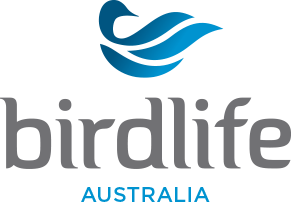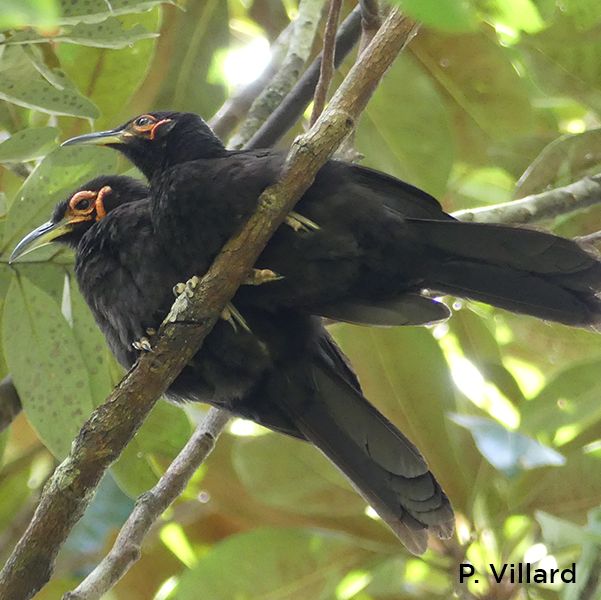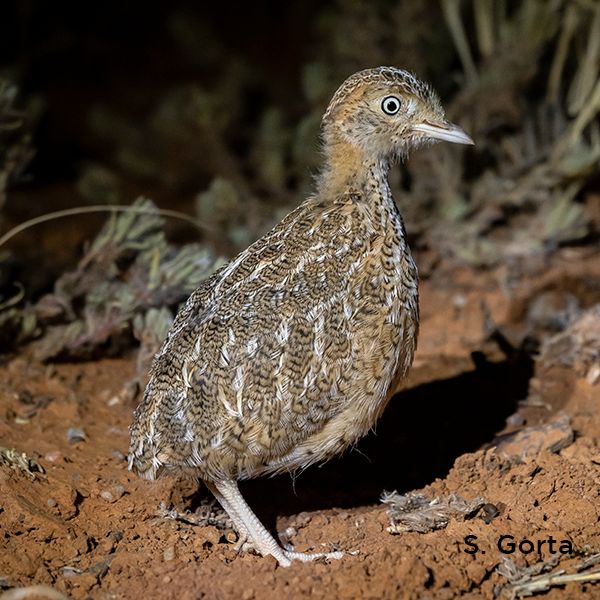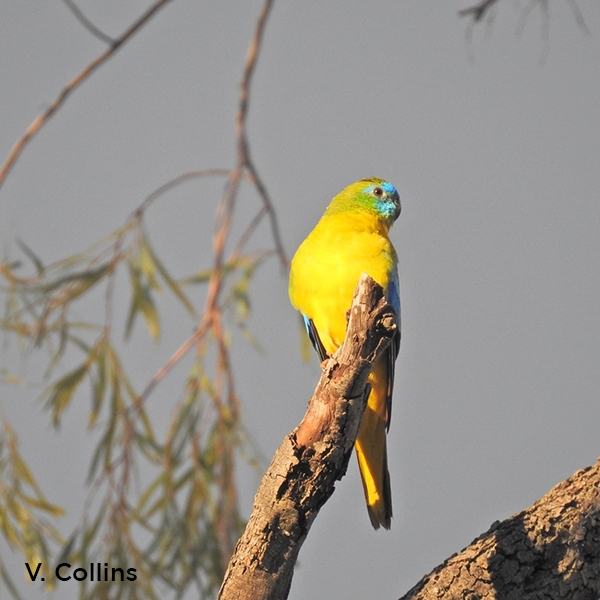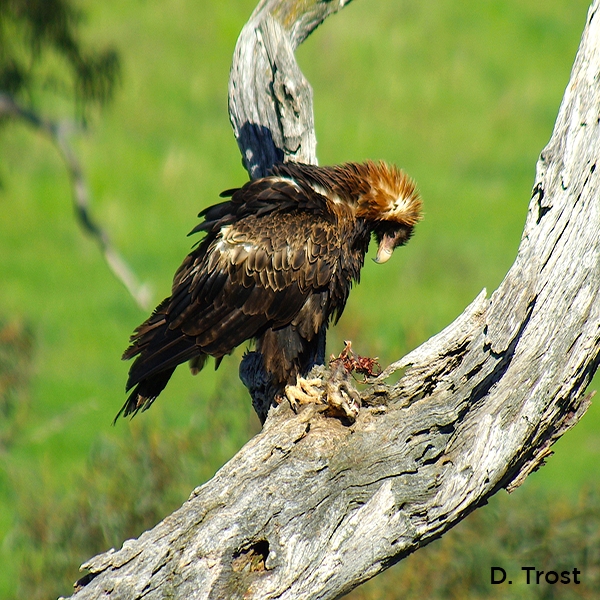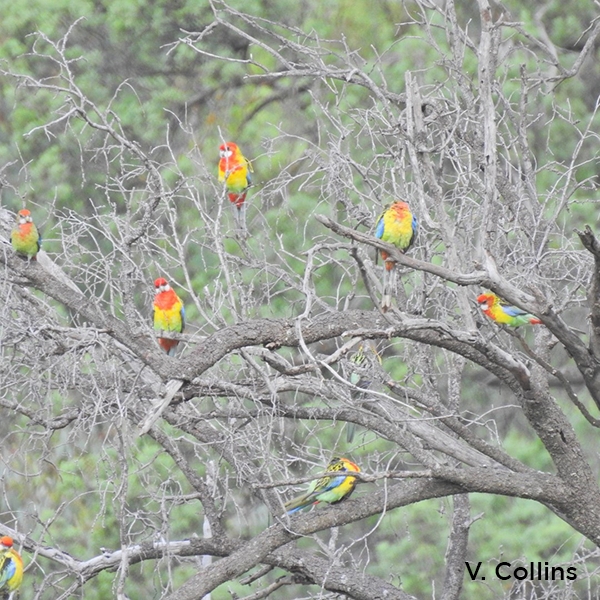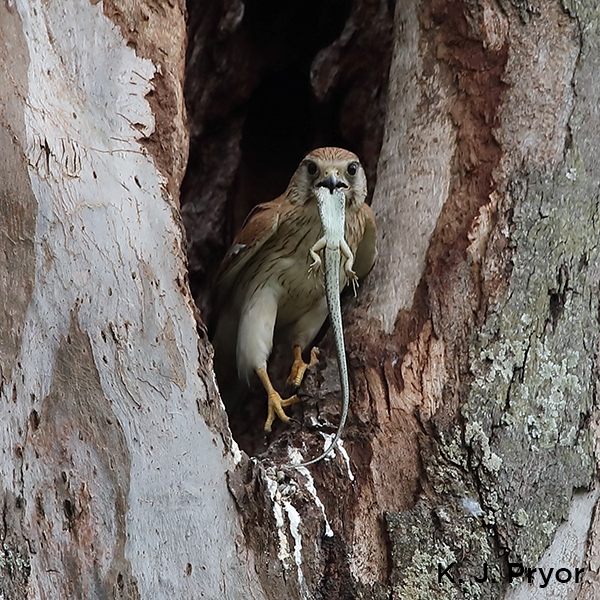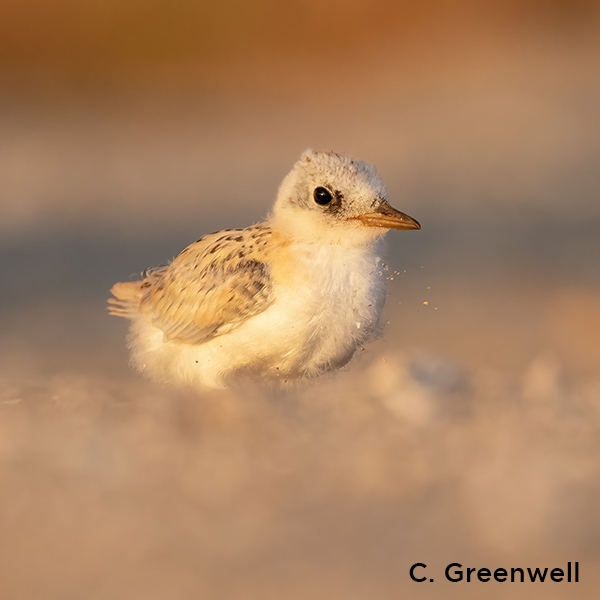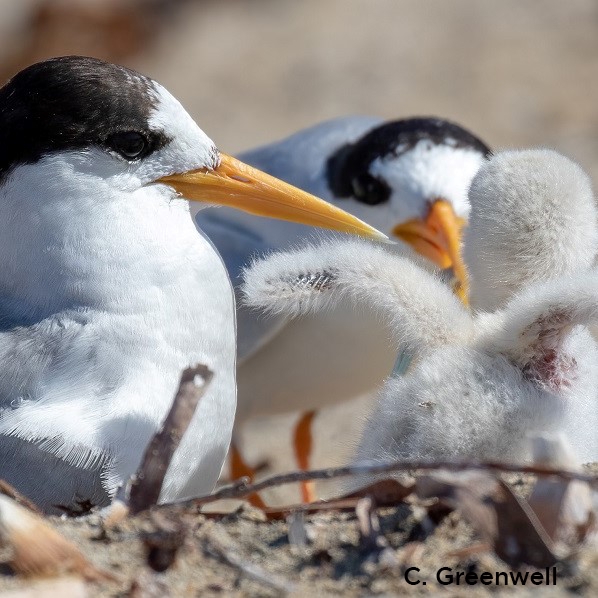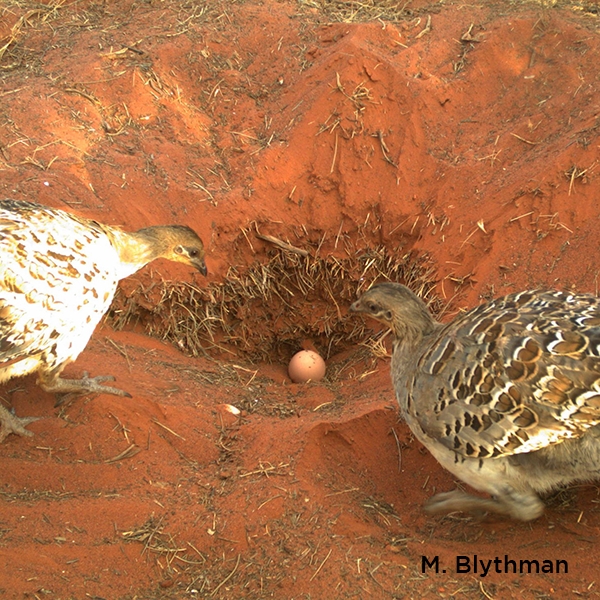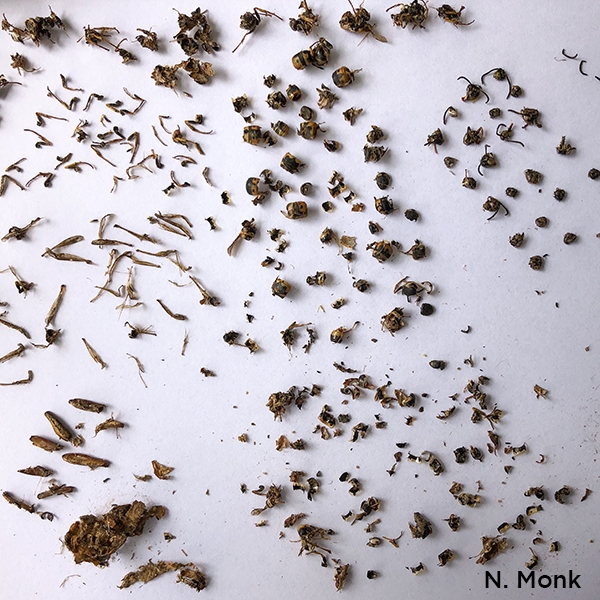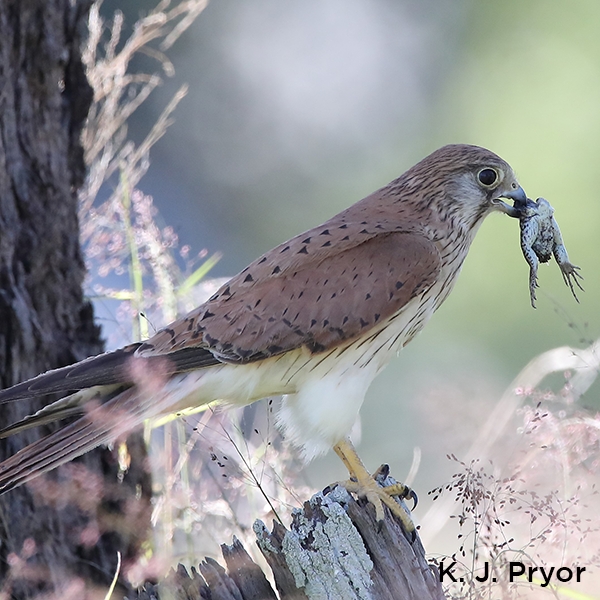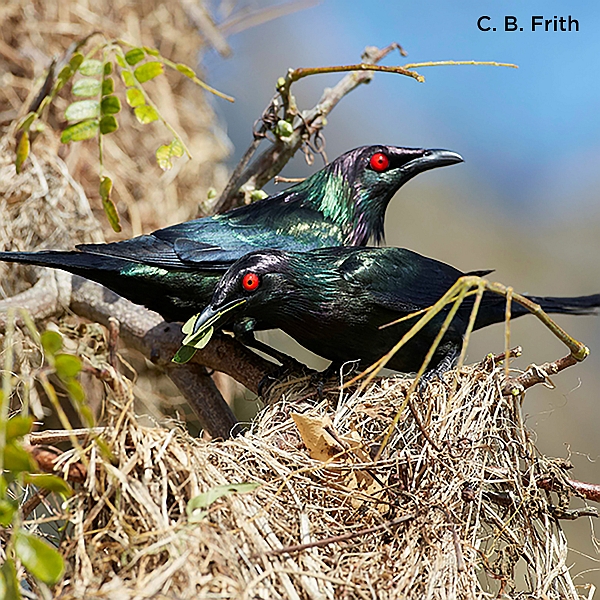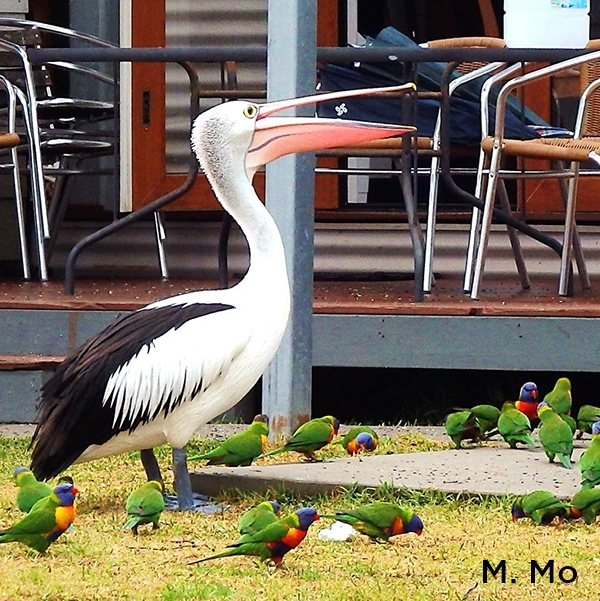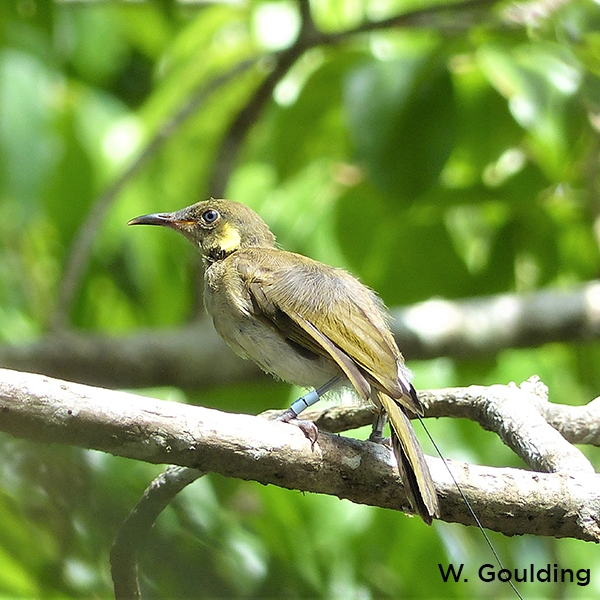Breeding ecology of a marine plain dependent passerine, the Capricorn Yellow Chat Epthianura crocea macgregori, in north-eastern Australia
Wayne A. Houston, Robert L. Black, Rod J. Elder, Damon Shearer
pp. 15-25
Abstract
The habitat and timing of breeding of the Critically Endangered Capricorn Yellow Chat Epthianura crocea macgregori were studied over 12 years on the central Queensland coast. The labile breeding season, although summer–autumn dominant, corresponded to the wetter months and inundation of breeding habitat, allowing this bird to breed in any season or month following substantial rainfall, and more than once in a year in response to atypical rainfall events in the drier months. Formation of flocks showed a seasonal pattern, with flock size significantly greater during the post-wet period than during the wet or dry season. Breeding birds were in pairs or family groups, and dry-season flocks were small as the birds dispersed widely across the available dry habitat. The relatively large flocks (20–80) at some sites in the post-wet period (typically 4–5 months after breeding commenced) are postulated to coincide with maturation of young birds. Breeding was observed in grass–sedge swamps on marine plains and supratidal saltmarshes with vegetation taller than 40 cm. Nests were placed low (27 cm ± standard error 7 cm above the ground) in clumps of vegetation that averaged 69 ± 8 cm high, and the height of vegetation supporting dependent young averaged 108 ± 7 cm. Nestlings numbered between two and four (average 2.8 ± 0.2). Capricorn Yellow Chats nested in the same habitat and sites from year to year. In the southern part of their range, their requirement for tall (>40 cm) supratidal vegetation and site-faithfulness suggest that conservation prospects could be enhanced by protection of relatively small patches of breeding habitat. In the northern part of their range, co-existence with livestock grazing suggests that appropriate habitat—tall grass and sedge cover—can be maintained providing stocking rates remain conservative. In general, recognition and improved government protection of tall supratidal saltmarsh, as a distinct entity from shorter saltmarsh with regular tidal influence, would enhance conservation outcomes for endangered fauna.
References
Beruldsen, G. (1980). A Field Guide to Nests and Eggs of Australian Birds. Rigby, Adelaide.
Black, R., Houston, W. & Jaensch, R. (2010). Evidence of regular seasonal migration by Australian Painted Snipe to the Queensland tropics in autumn and winter. Stilt 58, 1–9.
Black, R.L. & Houston, W.A. (2013). A sedentary population of Brown Songlarks Cincloramphus cruralis in the marine plain grasslands of the Central Queensland coast. Australian Field Ornithology 30, 14–21.
Bostock, H., Ryan, D., Brooke, B., Packett, B., Hancock, G., Pietsch, T., Revill, A., Leeming, R., Moss, P. & Harle, K. (2006). Sediment Accumulation and Holocene Evolution of the Fitzroy River Lower Floodplain, Central Queensland, Australia. Technical Report 48. Cooperative Research Centre for Coastal Zone, Estuary and Waterway Management, Brisbane.
Bureau of Meteorology (2016). Rainfall Variability Map of Australia, December to February. Bureau of Meteorology, Canberra. Available online: www.bom.gov.au (retrieved 20 October 2018).
Burgis, W.A. (1974). Cainozoic History of the Torilla Peninsula, Broad Sound, Queensland. Bureau of Mineral Resources Report 172. Australian Government Publishing Service, Canberra.
Cox, D.T.C., Brandt, M.J., McGregor, R., Ottosson, U., Stevens, M.C. & Cresswell, W. (2013). The seasonality of breeding in savannah birds of West Africa assessed from brood patch and juvenile occurrence. Journal of Ornithology 154, 671–683.
Davies, S.J.J.F. (1977). The timing of breeding by the zebra finch Taeniopygia castanotis at Mileura, Western Australia. Ibis 119, 369–372.
Duke, N.C., Lawn, P.T., Roelfsema, C.M., Zahmel, K.N., Pedersen, D.K., Harris, C., Steggles, N. & Tack, C. (2003). Assessing Historical Change in Coastal Environments: Port Curtis, Fitzroy River Estuary and Moreton Bay Regions. Report to CRC for Coastal Zone Estuary and Waterway Management, Marine Botany Group, Centre for Marine Studies, The University of Queensland, Brisbane.
Ford, H.A. (1989). Ecology of Birds. Surrey Beatty & Sons Pty Ltd, Sydney.
Higgins, P.J., Peter, J.M. & Steele, W.K. (Eds) (2001). Handbook of Australian, New Zealand & Antarctic Birds, Volume 5: Tyrant-flycatchers to Chats. Oxford University Press, Melbourne.
Houston, W., Elder, R., Black, R. & McCabe, J. (2006). Conservation significance of coastal wetland habitats for birds at Twelve Mile Creek, Fitzroy River, Central Queensland. Sunbird 36, 20–36.
Houston, W.A. (2013). Breeding cues in a wetland dependent Australian passerine of the seasonally wet-dry tropics. Austral Ecology 38, 617–626.
Houston, W.A, Aspden, W.J., Elder, R., Black, R.L., Neeves, L.E., King, A.G. & Major, R.E. (2018b). Restricted gene flow in the endangered Capricorn Yellow Chat: Consequences for conservation management. Bird Conservation International 28, 116–125.
Houston, W.A., Black, R. & Elder, R. (2013). Distribution and habitat of the critically endangered Capricorn Yellow Chat Epthianura crocea macgregori. Pacific Conservation Biology 19, 39–54.
Houston, W.A., Elder, R. & Black, R. (2018a). Population trend and conservation status of the Capricorn Yellow Chat Epthianura crocea macgregori. Bird Conservation International 28, 100–115.
Houston, W.A., Jaensch, R., Black, R., Elder, R. & Black, L. (2009). Further discoveries extend the range of Capricorn Yellow Chat in coastal central Queensland. Sunbird 39, 29–38.
Houston, W.A., Porter, G., Elder, R., Black, R. & Sheaves, M. (2004a). Rediscovery of Yellow Chats (Capricorn subspecies) on the Fitzroy River delta, central Queensland. Sunbird 34, 36–42.
Houston, W.A., Porter, G., O’Neill, P. & Elder, R. (2004b). The ecology of the critically endangered Yellow Chat Epthianura crocea macgregori on Curtis Island. Sunbird 34, 10–23.
Hutchinson, M.F., McIntyre, S., Hobbs, R.J., Stein, J.L., Garnett, S. & Kinloch, J. (2005). Integrating a global agro-climatic classification with bioregional boundaries in Australia. Global Ecology and Biogeography 14, 197–212.
Jaensch, R., Houston, W., Black, R., Campbell, L., Elder, R. & McCabe, J. (2004). Rediscovery of the Capricorn subspecies of Yellow Chat Epthianura crocea macgregori at Torilla Plain, on the mainland coast of central Queensland. Sunbird 34, 24–35.
Major, R.E. (1991a). Breeding biology of the White-fronted Chat Epthianura albifrons in a saltmarsh near Melbourne. Emu 91, 236–249.
Major, R. (1991b). Flocking and feeding in the White-fronted Chat Epthianura albifrons: The relationship between diet, food availability and patch selection. Australian Journal of Ecology 16, 395–407.
Male, B. (1995). Recovery action for threatened species—an Australian perspective. Ibis 137, 204–208.
Matthew, J. (2007). Family Epthianuridae (Australian chats). In: del Hoyo, J., Elliott, A. & Christie, D.A. (Eds). Handbook of the Birds of the World, Volume 12: Picathartes to Tits and Chickadees, pp. 612–626. Lynx Edicions, Barcelona, Spain
Morton, S.R. & Brennan, K.G. (1991). Birds. In: Haynes, C.D., Ridpath, M.G. & Williams, M.A.J. (Eds). Monsoonal Australia: Landscape, Ecology and Man in the Northern Lowlands, pp. 133–150. A.A. Balkema, Rotterdam, The Netherlands.
Newton, I. (1998). Population Limitation in Birds. Academic Press, London.
Nix, H.A. (1976). Environmental control of breeding, post-breeding dispersal and migration of birds in the Australian region. Proceedings of the International Ornithological Congress 16, 272–305.
Noske, R. & Franklin, D.C. (1999). Breeding seasons of land birds in the Australian monsoonal tropics: Diverse responses to a highly seasonal environment. Australian Biologist 12, 72–90.
Noske, R.A. (2001). The breeding biology of the Mangrove Gerygone, Gerygone laevigaster, in the Darwin region, with notes on brood parasitism by the Little Bronze-cuckoo, Chrysococcyx minutillus. Emu 101, 129–135.
Priddel, D. & Carlile, N. (2009). Key elements in achieving a successful recovery programme: A discussion illustrated by the Gould’s Petrel case study. Ecological Management and Restoration 10 (Supplement 1), S97–S102.
Pullin, A.S., Knight, T.M., Stone, D.A. & Charman, K. (2004). Do conservation managers use scientific evidence to support their decision-making? Biological Conservation 119, 245–252.
Queensland Herbarium (2016). Regional Ecosystem Description Database (REDD). Version 10.0 (December 2016). Queensland Department of Science, Information Technology & Innovation, Brisbane.
Quinn, G.P. & Keough, M.J. (2002). Experimental Design and Data Analysis for Biologists. Cambridge University Press, Cambridge, UK.
Reynolds, I.S., Walter, J.C. & Woodall, P.F. (1982). Observations on Yellow Chats (Epthianura crocea) in western Queensland. Sunbird 12, 21–29.
Schodde, R. (1982). Origin, adaptation and evolution of birds in arid Australia. In: Barker, W.R. & Greenslade, P.J.M. (Eds). Evolution of the Flora and Fauna of Arid Australia, pp. 191–224. Peacock, Adelaide.
Speight, J.G. (1990). Landform. In: McDonald, R.C., Isbell, R.F., Speight, J.G., Walker, J. & Hopkins, M.S. (Eds). Australian Soil and Land Survey, Field Handbook. 2nd edn, pp. 9–57. Inkata Press, Melbourne.
Walker, J. & Hopkins, M.S. (1990). Vegetation. In:
McDonald, R.C., Isbell, R.F., Speight, J.G., Walker, J. & Hopkins, M.S. (Eds). Australian Soil and Land Survey, Field Handbook. 2nd edn, pp. 58–86. Inkata Press, Melbourne.
Williams, C.K. (1979). Ecology of Australian chats (Epthianura Gould): Reproduction in aridity. Australian Journal of Zoology 27, 213–229.
Zann, R.A., Morton, S.R., Jones, K.R. & Burley, N.T. (1995). The timing of breeding by zebra finches in relation to rainfall in central Australia. Emu 95, 208–222.
